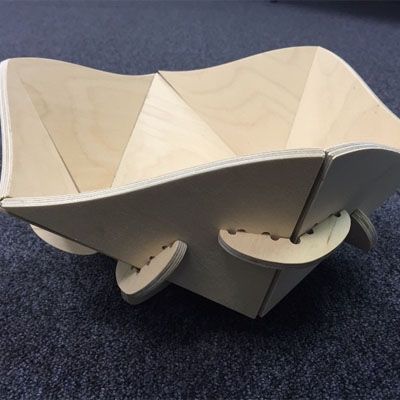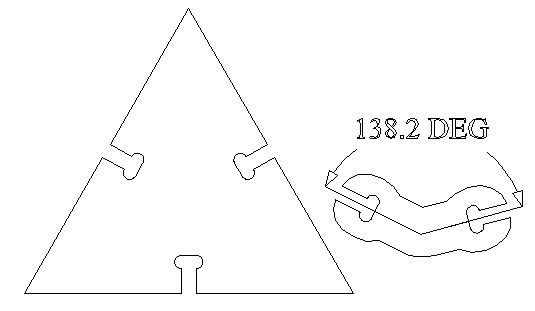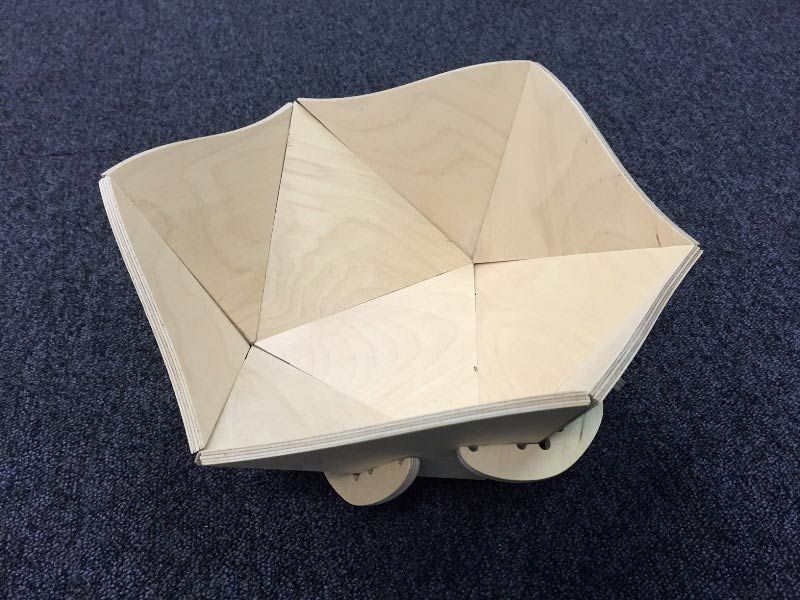
Last year (I know its taken me a while to write this blog entry) I got interested in how you might be able to construct an icosahedron (20 sided shape) using 2D triangles with connectors slotted into them to hold them together.
I decided to have a go at making one and started by looking up what the crucial angle would be to make the overall shape work. Turns out the critical value is 138.2 degrees. So I setup a simple equilateral triangle and a connecting arm using this angle and made multiple copies of each – nested them and cut them out…
You can see in the image on the top left what my two individual parts looked like (with angle indicated) before I made the copies. To ensure the parts would slot together I used T-bone fillets drawn in the software so the tool would not leave radii in the corners and the parts could be slotted together tightly. The individual pieces were machined using a simple profiles pass on the outside of the vector, with carefully places tabs to hold the parts in place. This worked out quite well and apart from being a bit tricky to assemble proved the concept as you can see below left.
"Overall I thought this was an effective way to make a 3D product and they machine very quickly as they are all simple 2D cuts. Plus this is a fun drawing exercise if you want to try laying out your own version…"
The next iteration was to make it easier to assemble with connectors that only fitted into the slots from the outside (creating a kind of exoskeleton). Above center and right you can see the shapes being cut out for this iteration and then it being assembled. I was pleased with this but realised it would look better if the slots did not go all the way through and also if I left the top edge without the connector slots.
This second version also made me think this could work well for a bowl so I adjusted the design so the slots became pockets and also added a kind of wave patter around what would be the top edge of the shapes and only cut 10 of them. Below you can see a couple of views of how this worked out. None of these have been glued but are still relatively stable – although they could not take too much punishment without a more permanent fixing option. Overall I thought this was an effective way to make a 3D product and they machine very quickly as they are all simple 2D cuts. Plus this is a fun drawing exercise if you want to try laying out your own version…


Vectric Ltd
Precision House
2 Arden Road
Alcester
B49 6HN
Registered in England Number 05382596
VAT Registration GB115123072
Privacy Policy |
Cookie Policy |
Terms and Conditions